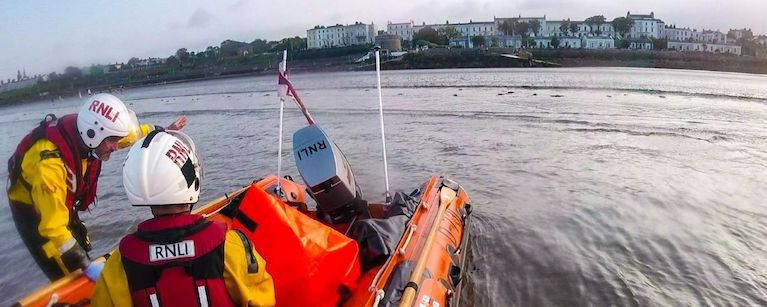Dun Laoghaire Harbour RNLI was requested to launch by the Irish Coast Guard at 5:57 pm this evening (Thursday 17 September) after a member of the public reported a swimmer who appeared to be in difficulty off Blackrock
The inshore lifeboat was launched swiftly at 6:00 pm by Helm Nathan Burke who had been at the lifeboat station doing routine equipment checks. A further two crew members Andrew Sykes and Ronan Adams arrived minutes later and with the lifeboat already in the water the crew headed for the reported location, arriving on scene at 6:05 pm.
On arrival, the crew quickly assessed the situation and swiftly pulled the person from the water. Without delay, the person was casualty care assessed and seen to have been in a hypothermic state and slipping in and out of consciousness. A decision was made to return the person to Sea Point Beach immediately, with the National Ambulance Service and Irish Coast Guard’s Rescue 116 helicopter en route to provide further medical assistance. With the help of Dun Laoghaire Irish Coast Guard Unit our crew handed the person to the National Ambulance Service, the person’s condition had started to improve on handover.
Weather conditions at the scene were described as sunny clear with a warm breeze and a choppy sea swell.
Speaking following the call out, Nathan Burke, Dun Laoghaire RNLI lifeboat Helm said: ‘The timing was crucial tonight and I’m very glad I was at the station when the call-out came in. The other two crew members arrived very quickly which ultimately resulted in a successful outcome. This evening showed that it is very important for swimmers not to overestimate their ability and underestimate the unseen currents and cold water that make swimming in the sea in Ireland more challenging’.
































































